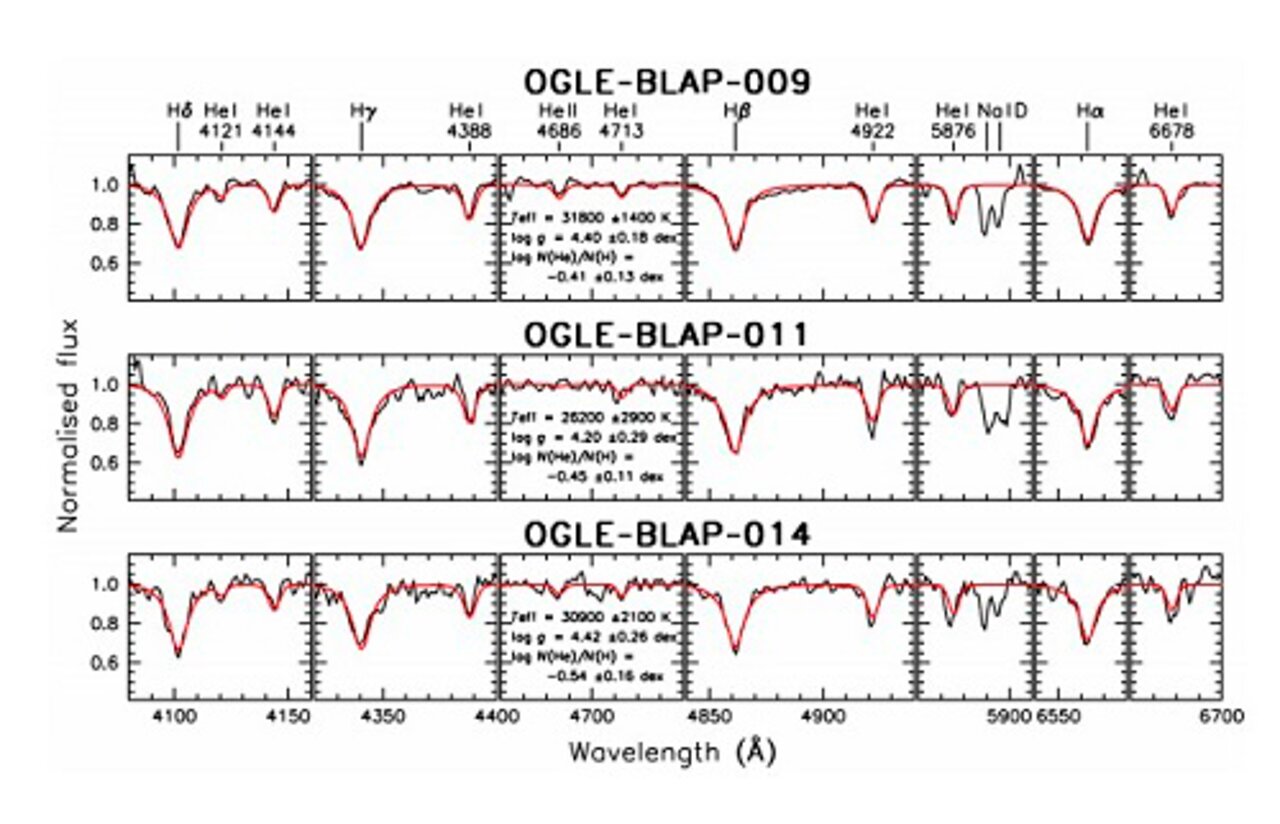Gemini Confirms a New Class of Variable Stars
August 2, 2017

Gemini confirms a new class of variable stars called Blue Large-Amplitude Pulsators. They are significantly bluer than main sequence stars of the same luminosity demonstrating that they are relatively hot. The new pulsating stars vary with periods ranging from 20 to 40 minutes and amplitudes spanning 0.2 – 0.4 magnitude. These characteristics have not been observed in any known hot pulsators.
Astronomers using the Multi-Object Spectrograph (GMOS) on the Gemini South telescope have confirmed a new class of variable stars called Blue Large-Amplitude Pulsators (BLAPs). Pawel Pietrukowicz (Warsaw University Observatory, Poland) led the study as part of the Optical Gravitational Lensing Experiment (OGLE), a variability sky survey conducted on the 1.3-meter Warsaw Telescope at Las Campanas Observatory, Chile.
Following up on the team’s discovery of 14 candidate stars the team used GMOS to obtain spectra for three of the candidates. The Gemini data confirmed these stars have helium-rich atmospheres and high surface temperatures of about 30,000 K, comparable with hot subdwarfs. Nevertheless, Pietrukowicz concludes that the luminosity of these two classes of hot stars differ significantly, with BLAPs having much higher luminosity and much lower gravity than hot subdwarfs. “We found that the new stars are low-mass giants, which vary with exceptionally high amplitudes. This excludes the possibility that they are hot oscillating subdwarfs, leading to the conclusion that BLAPs form a new class of variable stars,” says Pietrukowicz.
This work is published in the journal Nature Astronomy and is available online (subscription required).
Background: Variable stars are stars which fluctuate in brightness. Often, the observed changes are due to regular intrinsic variations (pulsations) of the stars where the pulsating star periodically swells and shrinks. Variable stars are classified into many types, including the most well-known type known as Cepheids. The absolute brightness of a Cepheid variable is related to its pulsation period so they are used to determine distances in the nearby Universe.
The very small number of BLAPs known so far points to a rare, unexplored episode in stellar evolution.
Paper Abstract:
Regular intrinsic brightness variations observed in many stars are caused by pulsations. These pulsations provide information on the global and structural parameters of the star. The pulsation periods range from seconds to years, depending on the compactness of the star and properties of the matter that forms its outer layers. Here, we report the discovery of more than a dozen previously unknown short-period variable stars: blue large-amplitude pulsators. These objects show very regular brightness variations with periods in the range of 20–40 min and amplitudes of 0.2–0.4 mag in the optical passbands. The phased light curves have a characteristic sawtooth shape, similar to the shape of classical Cepheids and RR Lyrae-type stars pulsating in the fundamental mode. The objects are significantly bluer than main-sequence stars observed in the same fields, which indicates that all of them are hot stars. Follow-up spectroscopy confirms a high surface temperature of about 30,000 K. Temperature and colour changes over the cycle prove the pulsational nature of the variables. However, large-amplitude pulsations at such short periods are not observed in any known type of stars, including hot objects. Long-term photometric observations show that the variable stars are very stable over time. Derived rates of period change are of the order of 10-7 per year and, in most cases, they are positive. According to pulsation theory, such large-amplitude oscillations may occur in evolved low-mass stars that have inflated helium-enriched envelopes. The evolutionary path that could lead to such stellar configurations remains unknown.
